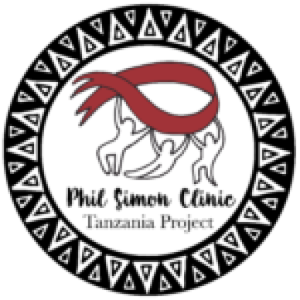The social workers, I think, have a very unique experience as part of this medical team. We don’t dispense medications…we can’t read an x-ray…we all got a little queasy listening to Dr. Schulman’s lecture on gastric bleeding at Mount Meru hospital…but Ann Kleeger, Susie Icaza and I have been hard at work practicing our own skills this week. As she mentioned, Ann met with her HIV+ group on Monday morning. For the fourth year in a row, the men and women of the Living Positive group were waiting for her at 8am waiting to share their experiences of the year — who has been sick, who has started on antiretroviral therapy (ARV), and who has died.
During his visit to California in October, I had the opportunity to work with Dr. Solomon on writing a proposal to fund a Home Based Care program to be operated out of Upone Charitable Medical Centre. This was actually an idea first put forth by one of my students in the MSW program at California State University, Long Beach — Scotty Enyart, who decided his thesis project would be a proposal to fund this HBC program. HBC involves training of volunteer community health workers — many of whom are HIV+ themselves — to conduct home visits to families infected with and affected by HIV/AIDS to provide basic medications and supplies, psychosocial and spiritual support, linkages to resources and Voluntary Counseling and Testing (VCT) centers, and to those hospitals providing ARVs. We were able to put together a comprehensive proposal, and Dr. Shriner decided that it would be worthwhile to provide funding for this project. This week has been my chance to experience first hand the wonderful work of the HBC volunteers in the Elerai and Sombetini Wards of Arusha.
Susie Icaza and I spent Tuesday in Elerai with four of the HBC volunteers conducting home visits. With several stops along the way at the small village markets to purchase tea and sugar (it is the custom to arrive with something for each family), we walked for about five hours visting 10 families — the first four hours in the blazing sun, the last hour in a torrential downpour. On Thursday, the HBC supervisor for the Upone program, Gladness Jacob, accompanied Dr. AlRashid, Luisa Schulman, Cheryl Prigodich and me to the Sombetini ward where we visited 5-8 families (we all counted a different number — delerious from the heat, I guess). Because these homes were more spread out than in Elerai, we were forced at one point to board a Dala Dala (see my entry from last year) — sort of the public “bus” system of Arusha. These vehicles are about the size of a minivan in the U.S., and Cheryl P. counted 21 passengers in our vehicle. For this social worker who suffers from claustrophobia, I was needing a bit of psychotherapy and Ativan after this trip!
I have had the incredible opportunity to experience the people of Arusha over the past four years I have been a part of this project. Seeing the “city” of Arusha on foot this week has been amazing, and quite different from the view from the Landrover I have seen on my way back and forth to the clinic. You may remember my camera project, Through African Eyes (see photo gallery). Walking from house to house in Arusha has been like stepping in the these photos.
Through African Eyes continues this year with the wonderful support of the fifth graders at Holy Family School in South Pasadena. On Friday we visited the orphanage and once again the children put on an amazing show for the team. I had the opportunity to share the photos and stories set with me by the Holy Family kids, and to give the orphanage kids their photo “assignment” for this year. During this week, both these kids and the Holy Family kids will be taking photographs of scenes that represent Love/Upendo, Hope/Tumaini, and Faith/Imani.
At the end of the week I’ll share more detailed stories from the home visits, which have been amazing.
